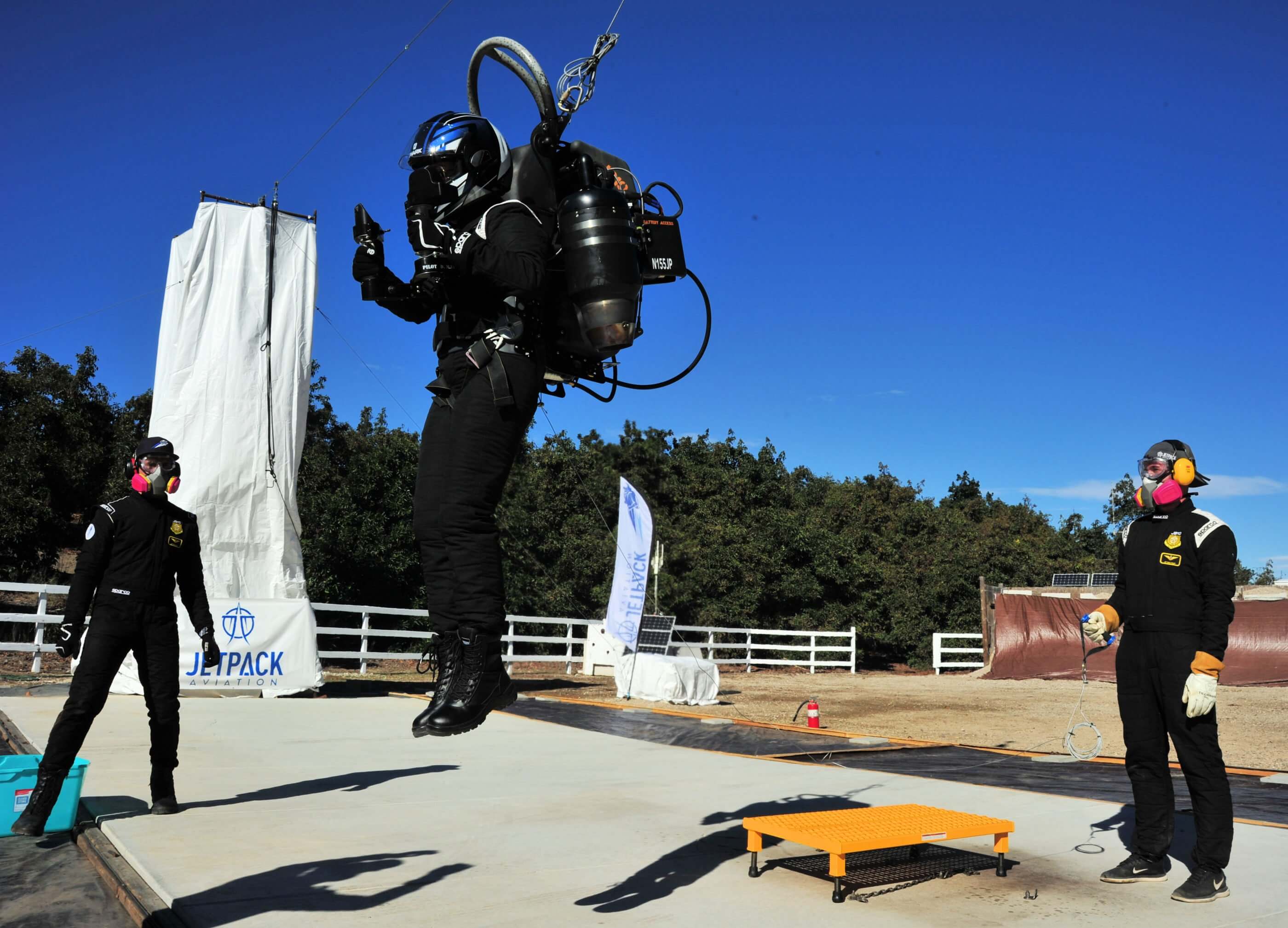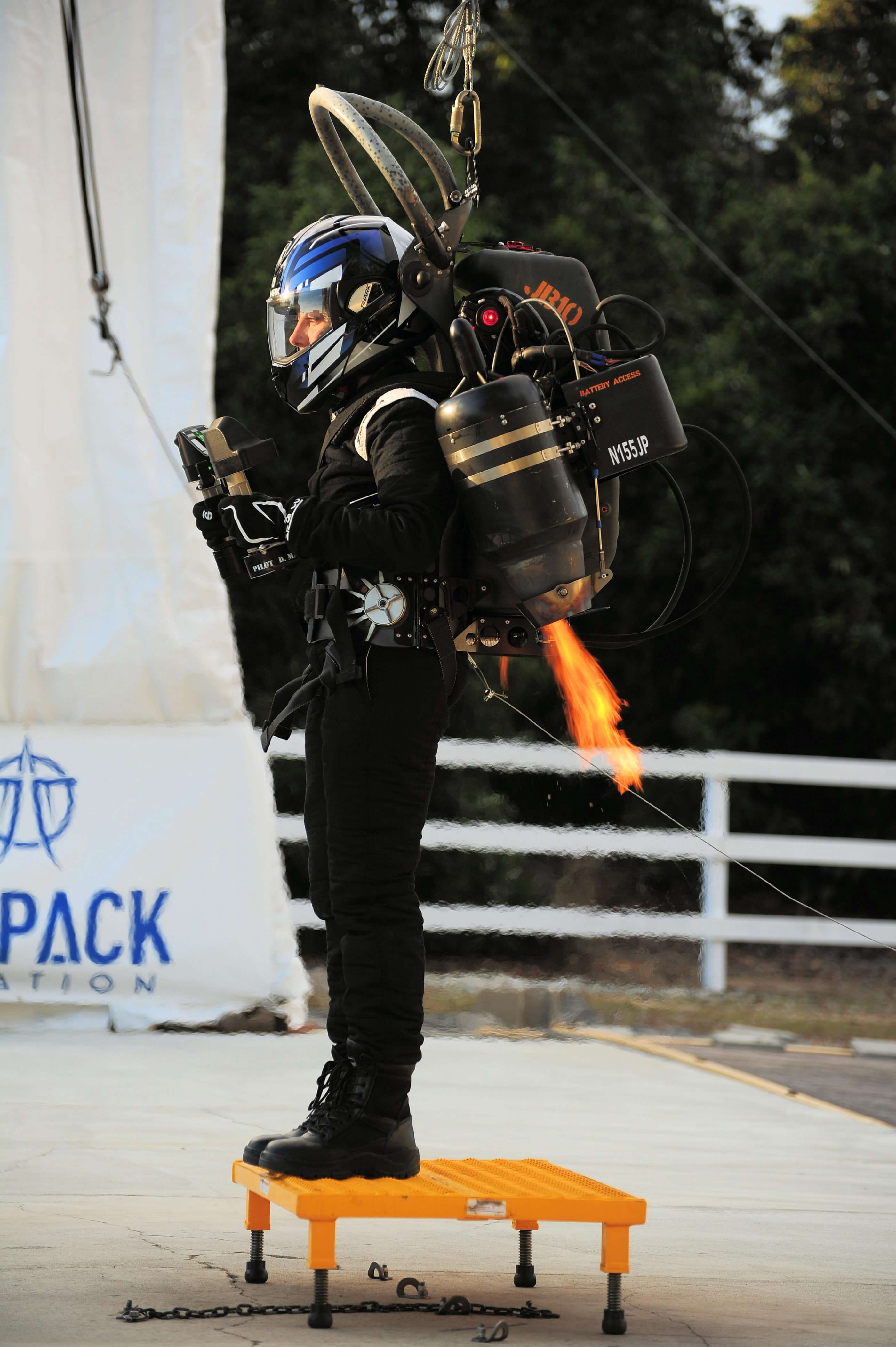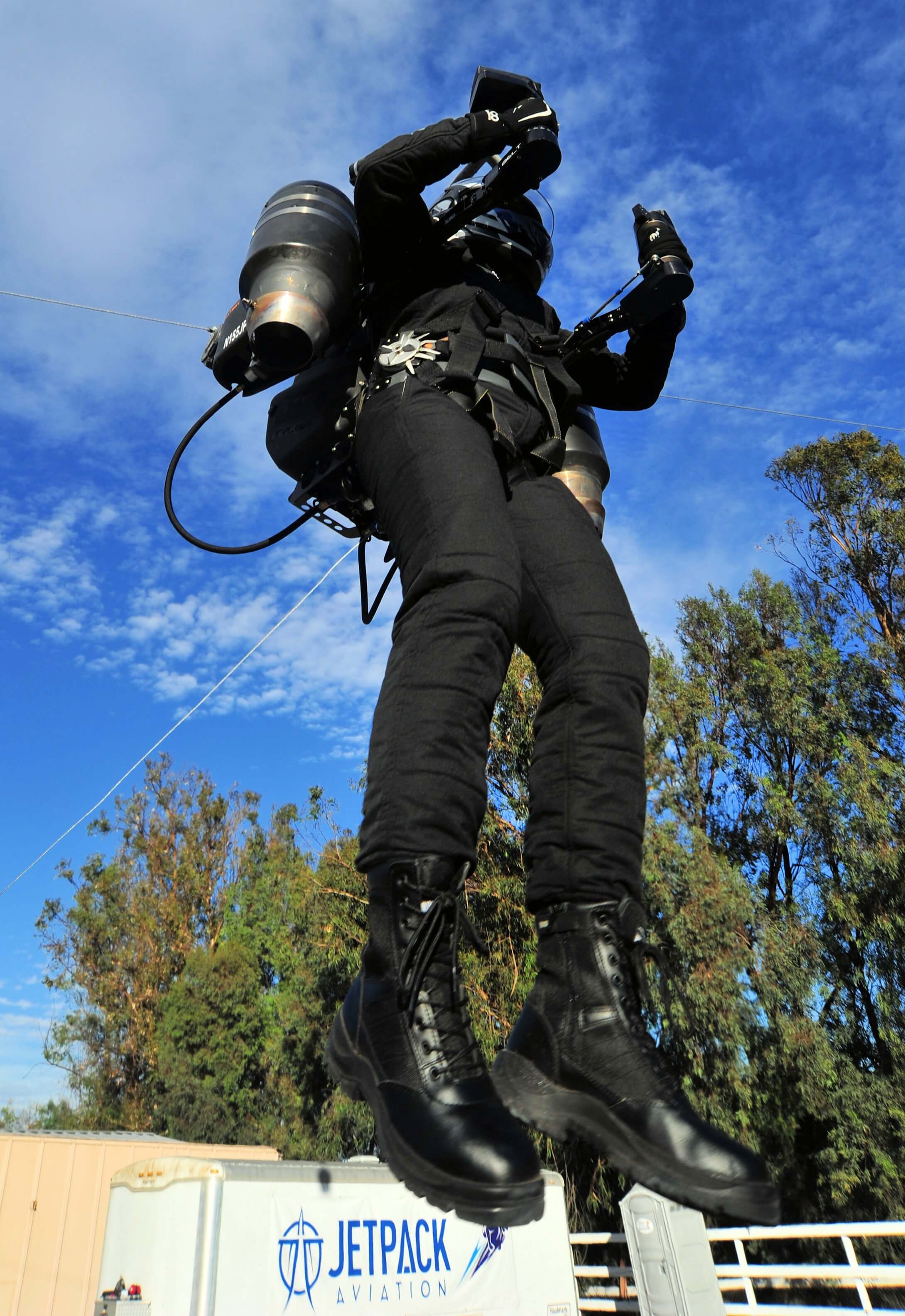As a helicopter pilot, one of my go-to jokes while flying is, “I only fly helicopters ’cause there are no jetpacks!”
Growing up, I always figured that by the time I was an adult, we’d all be flying jetpacks around.
And then one day someone said, “Actually, there is a jetpack…”
What?! After a quick Google search, I found JetPack Aviation. Sure enough, there was Mr. David Mayman, an innovator from Australia who had actually designed and built a real-life jetpack. In fact, he had even flown it around the Statue of Liberty… back in 2015!

Where the heck had I been, and why hadn’t I heard about this? Oh, I know: I had been flying helicopters out in the very remote wilderness of Alaska, living in man camps and working mineral exploration projects for months and months at a time, not paying attention to jetpack news. But that didn’t matter, because without realizing it, I had actually been building up the perfect complementary skill set to fly a jetpack.
Once I knew of its existence, it became my sole purpose in life to experience flying it. After several unanswered emails, I hounded JetPack Aviation on social media (like all the other crazed wanna-be jetpack pilots). Eventually the team there saw my comments and I got a response.
JetPack Aviation director of operations Boris Jarry (who is also a company pilot) contacted me with the exciting news that they would soon be offering the very first experience center training day to the public — the well-vetted public, anyway. Their website clearly states that they can say no to anyone and not have to tell them why.
Somehow I made it past the vetting process and signed up, albeit blindly. They didn’t yet know and couldn’t tell me where it would be or how much it would cost. That didn’t matter — I would be there! Nothing could stop me.
A few months later in December 2018, after wiring the company a substantial amount of money, I showed up at the meeting spot in California (a grocery store parking lot at the crack of dawn) hoping the whole thing wasn’t some big elaborate scam designed to take advantage of my childhood fantasies. Would anyone be there?

Yes! There were two other flyers in that parking lot, all of us wide-eyed, a little nervous, yet excited for what the day would bring.
We all breathed a sigh of relief when Jarry showed up. His big friendly smile quickly assured us that we were in good hands and about to experience the thrill of a lifetime.
We all drove, caravan style, following Jarry through a maze of seemingly endless orchards. And then, at the very top of a hill, we finally arrived at the training center. It was a big concrete pad with a huge tether system — 25 feet off the ground and probably 200 feet across — stretched between a big tower and a massive tree. And the pack! A real-life jetpack, proudly perched on its mount, hanging there in all its glory, all its futuristic appeal, an invitation to turn my fantasies into reality.
Next to it was a smiling David Mayman, excited to share his creation with us — his first time sharing it with anyone outside of the company. What an honor! At that point, more people had walked on the moon than had flown a jetpack, and I was about to be the first woman in the world to fly one.
Mayman is the only Federal Aviation Administration (FAA)-certified jetpack pilot, and the jetpack we were about to fly, a JB10 model, had an actual registration number assigned by the FAA, N155JP. The JB10 has two turbine engines, each with a single compressor and single turbine, producing about 200 pounds of thrust each.
The fuel tank on the back holds 9.5 gallons (36 liters) of kerosene or diesel, which provides about a 10-minute range, or more for a lighter-weight pilot. (Weighing in at 125 pounds/56 kilograms, I was getting close to a 20-minute range during my training sessions.)
The whole pack weighs 83 lb. (38 kg) dry. The pilot is strapped in with a five-point harness, and has a throttle in the right hand and a yaw control in the left hand which ducts and directs the thrust on each engine.

Test flights have demonstrated speeds of up to 120 miles (193 kilometers) per hour, but the company believes the jetpack is capable of up to 150 mph (240 km/h) or greater. It has been flown as high as 120 feet (36 meters) over water, but without an emergency parachute system, height is limited to the risk the pilot is willing to take. The engine itself is rated up to 15,000 feet (4,570 m) mean sea level.
JetPack Aviation’s JB12 model has six engines, and a computer system that can detect an unexpected decrease in thrust from any engine and automatically balance thrust on the opposing engine. It will be exciting to see this model’s new capabilities as the team tests it further.
After a very thorough safety briefing and orientation on the equipment, we were suited up with fire-retardant long underwear, aluminum pants, flight suit, leather boots, helmet, gloves, ear plugs — the works.
Mayman, Jarry, and engineer Chris Black all helped me strap into the jetpack, which was then tethered to the high line above so I couldn’t go shooting off to the moon right away. During the first flight, I also had a line on either side of me so that Mayman could help hold my yaw steady. He stood in front of me to give hand signals and assurance. Black was behind me holding yet another tether, while Jarry was watching closely, ready to run after me and pull me back to the starting point.
Because I was tethered up for the first flight, all I really had to think about was the throttle control. Although Mayman had a tether in each hand and wasn’t able to give me hand signals, somehow I knew exactly what to do just by watching his eyes. I twisted the throttle, felt the incredible power of the engines, felt the harness get tighter and the pack get lighter.

Suddenly, my feet came right up off the grate I was standing on. I was airborne — with a jetpack!
I had so much fun learning throttle control that I didn’t want to stop, but eventually my fuel ran low and I had to. For the second flight, Mayman coached me through the push-button start, which involved monitoring the display for each engine as it spooled up. The start is when flames come shooting out of each engine, which made me feel like a total badass, flame-throwing jetpack pilot.
That feeling didn’t last long, though, because it was time to fly without the training wheels of the two yaw tethers. I increased the throttle, lifted off, found some momentary hang time, started a slow-motion twist to the left… then lost control, released the throttle, and dangled from the tether like a spinning monkey, my feet almost able to reach the ground to stop my spin, but not quite.
My three coaches all ran after me, grabbed the pack, and slid me back to the starting position on the tether, where I was able to stand on the little raised grate. I tried it again: a little more momentary hang time, and another spin. I did it again and again until my fuel ran out, each time finding a tiny bit more control.
It was not easy, but having four flights throughout the day with ample rest in between allowed me to process what I was experiencing. Gradually, my brain started to comprehend when the sight picture was changing and command the appropriate correction, whether that was to twist the throttle right or left, twist the yaw control, or shift my weight right, left, forward, or back. It was much like learning to hover a helicopter and a thrill I’ll never forget.

By the last flight of the day, I was actually able to control a hover 10 feet off the ground. Although it was just for a moment, it is a moment forever imprinted in my mind.
The sun had just set, the colors on the horizon were popping, and I was floating up off the Earth, on the top of this little hill, looking out towards the Pacific Ocean on the horizon. And I was flying, just like I always dreamed I would be.
This incredible experience was only the start of a brand-new passion for me. I’ve since gone back to fly the JB10 again. More recently, after training with Richard Browning of Gravity Industries, I became the first woman in the world to fly a personal jet VTOL device in free flight with no safety tether, using the Gravity Jet Suit. My friends are starting to call me “Jet Leigh”! And it all started on that hilltop in California.









